While the Commonwealth Intervention created issues for remote NT Aboriginal communities, it was the loss of local control over decision making created by the Territory Government that really failed them writes JASON WALLS.
The issues reflected in the minutes will be familiar to Territorians from Darwin to Alice Springs and everywhere in between — violence, crime, unemployment, substance abuse.
Dr Baumann has spent her whole life in Nauiyu and while her passion for the place remains undimmed by the passage of time, she says she now fears for its future more than ever.
“I was born and bred here and this is the worst I’ve ever known for it to be,” she says.
“We’re just scared that we’re becoming dysfunctional.”
But it wasn’t always like this.
Far from being the intractable product of an inherently broken society — as the problems facing remote Aboriginal communities are all too often characterised by outsiders — Dr Baumann dates Nauiyu’s troubles to a single day: July 1, 2008.
That was the day the Territory Government abolished the community government councils (CGCs) that managed affairs in towns like Nauiyu, hot on the heals of the notorious Commonwealth “Intervention”.
Dr Baumann says while the Intervention created its own issues, it was the loss of local control over decision making when the Nauiyu Nambiyu CGC was disbanded that caused the most harm.
“We had no problems, we were able to do whatever was needed in the community and look out for the needs of families in the community, everyone was happy, everyone worked together,” she says.
“(Then) every Tom, Dick and Harry in the community that had a job was sacked and things taken away, like equipment and machinery and the jobs were given to outsiders.
“From that time up to now young people are just growing up with nothing.”
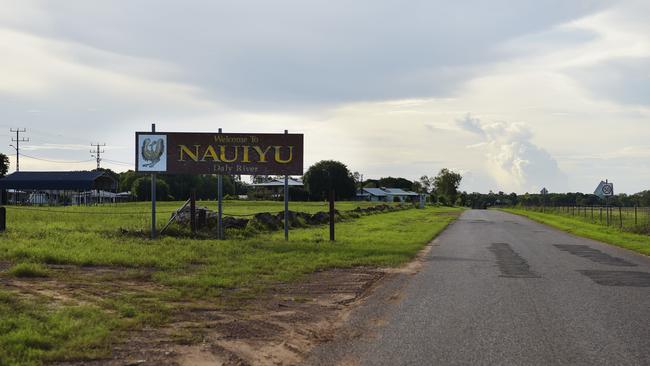
KEN Baumann is one of the few white fellas in Nauiyu, where for 30 years prior to the council’s sacking, he ran one of the work crews the NNCGC employed to build and maintain the town’s housing stock.
For most of those three decades, Mr Baumann says Nauiyu was “a very functional community” before the council amalgamations “destroyed” many of the Territory’s self-managed indigenous communities.
“This was a very tightly run community by the people themselves, because no white bloke had really any say,” he says from the veranda of the home built by local hands he still shares with wife Miriam-Rose.
“All of these houses you see around you were all built by local labour, I was the only silly white bugger there waving my hands around and the rest were locals.
“I had 15 blokes working for me, we were pouring concrete (one day) and they walked onto the job site and said ‘You’re all sacked, you get a week’s holiday’ — and everybody just looked at one another in total amazement.”
From that day on, the town’s employment programs — which until then had operated hand in glove with the work crews, using locally generated cash to fund maintenance and create jobs — would be managed remotely by city-based bureaucrats.
Mr Baumann says the system that had kept the majority of Nauiyu’s population in work for decades turned into a cruel joke overnight, now consisting of nothing more than busywork.
“I’m sitting here and they got my old gang, they took them over there — this is to get their (dole) money — they had a white bloke come down and he’s going to train them in construction,” he says.
“So he had them there for a week saying this is a square and this is how you use it, so he’s got them all using a square to mark a line on a piece of wood — these blokes have worked on and built houses for 20 years.
“At smoko time they’re all over here crying on my table saying ‘What is wrong with that man, why have we got to go there?’ and I’m saying ‘Well if you want your money, this is the new system, you have to go there and you have to be there for that period of time’.”
With the community’s profitable businesses “driven to the wall” and no work crews around to maintain the town’s homes and infrastructure, Mr Baumann says quality of life also spiralled downward.
“The NT Government did house inspections and so forth and that was pretty much a furphy too, you couldn’t get your orders because they run to a budget and they didn’t have the extra income coming in,” he says.
“They got the rent and they multiplied it by about five or six times the amount and then of course they didn’t collect much rent because nobody could afford to pay it so you had people in arrears all over the place.
“So with all their high flying amounts of money that they worked out on paper, well in practice it just didn’t work at all and it’s still pretty much the same today.”
With as many as 10 different language groups in Nauiyu, Mr Baumann says tensions between restless clan groups are commonplace.
When combined with the boredom and hopelessness that comes with high unemployment, he says those tensions have now begun to boil over.
“You’ve got a whole gang of teenage boys and girls, well they’ve got nothing to do, they’ve got no jobs, they’ve got no future, we’ve had riots up and down the street for four or five days,” he says.
“One of the great benefits that I saw when I was in housing, I had (people) from all factions working with me and they had to work together, so that killed half of it because they really didn’t hate one another at all — when you’re working with somebody to then go at night time and bash him up, well it’s a lot harder.”
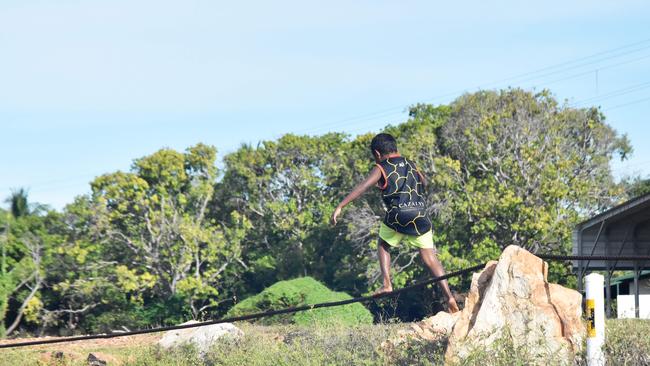
MIRIAM-ROSE Baumann is a shining example of a life well lived in a remote community.
After becoming the NT’s first fully-qualified Aboriginal teacher in 1975, Dr Baumann went on to become the principal of the local primary school before being made a Member of the Order of Australia in 1998.
“When I left school I just thought I’d try something and got a job at the clinic to test to see if I wanted to be a health worker, that didn’t go down really well with me — I didn’t like people bleeding and dead people and I said ‘no, that’s not me’,” she says.
“(Then) a teacher offered a job as an assistant with her and I never looked back.”
Dr Baumann says the various work crews that operated under the NNGCG meant young people could rotate through different career options like she had rather than being stuck in a detested, dead end job.
That system worked in conjunction with the former federal Labor government’s Community Development Employment Projects program, since replaced by the Coalition’s controversial Community Development Program, and Dr Baumann fears those opportunity’s have now been lost.
“They (could) rotate after a month or something until they felt they fitted into that, becoming a health worker or a teacher or working in the shop or (doing) admin or sport and rec,” she says.
“If there was a serious thing set in place (again), as in concrete, so that these things can be offered to young ones — or anybody for that matter — I reckon you’d get heaps of people come out and become something, somebody, with qualifications and things.”
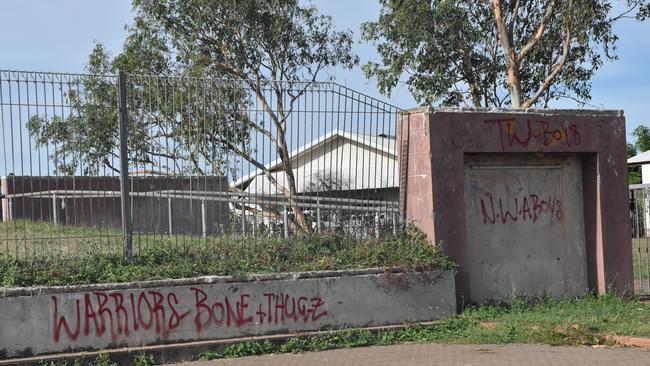
IRONBARK Aboriginal Corporation CDP activities co-ordinator, Trevor Hutchinson, has been in Nauiyu for more than a decade and has worked under the CDP and the CDEP.
He says in the old days before amalgamation, the CDEP was overseen by the NNCGC and Ironbark is now trying to repeat some of those old successes under the more restrictive CDP.
“The main focus these days is about empowering communities again, Ironbark is about trying to build infrastructure and small enterprise in communities and head back towards those CGC days, so giving the power back and to achieve that we’re looking at the old CDEP model,” he says.
“It was good, we had a housing crew, a painting crew, basically a parks and gardens crew — not all of them were 100 per cent employed, they had a core structure at the top that was employed and then the CDEP program would top that up with labour.”
But despite Ironbark’s best efforts, employment in Nauiyu remains about half what it was pre-amalgamation.
“Back when I first arrived in 2007 there was about 78 per cent of people in some form of employment in this community through the CDEP program or what the CGC had structured in terms of upcoming projects,” he says.
“At a rough guess I would say it could be around 38-40 per cent (today) so it’s a huge drop in comparison to what it was.”
Like others in Nauiyu, Mr Hutchinson says even though the CGCs weren’t perfect, and like all political bodies they were at times open to corruption, it’s too late to bring them back anyway.
The genie has been out of the bottle too long.
But, like the Baumanns, he says returning some level of control to local people over their own affairs is critical if things are ever going to change for the better.
“It is that one size fits all approach that doesn’t work for everyone so the more steps we take to work with the government to get back to those communities governing themselves and retaining the economy and building the infrastructure I think is a positive step,” he says.
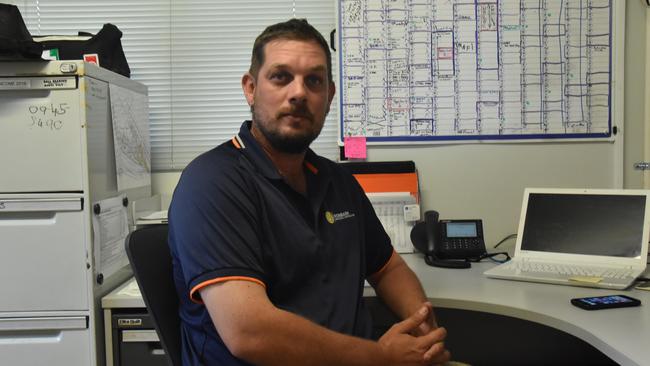
TERRITORY Indigenous Affairs Minister Selena Uibo says the government is currently developing a 10-year plan to return decision making to local hands in Nauiyu.
She says four houses have been upgraded in the town using local labour so far and further works to improve another 20 homes are planned.
“The Territory Labor Government is restoring local decision making to Aboriginal communities to empower residents, because they should decide what is best for their community when it comes to housing, health, justice and education,” she said.
“Like many remote Australian communities, Nauiyu has been devastated by the Federal Government’s CDP, which has plunged Aboriginal and Torres Strait Islander people into poverty and increased rates of crime and domestic violence.
“The Federal Government needs to abolish this program in its current form and commit to listening to, and empowering Aboriginal Territorians.”
Bill Shorten has pledged the scrap the CDP if Labor wins today’s election but Federal Indigenous Affairs Minister Nigel Scullion did not respond to a request for comment.
■ ■ ■
WHILE she knows there’s no going back to the old ways, Dr Baumann is not one to sit back and wait for someone else solve Nauiyu’s problems.
Through her Miriam-Rose Foundation, Dr Baumann is working with tourism operators and the NT Cattlemen’s Association to recreate the sort of opportunities she had as a young woman.
“It’s to work with younger people, school-aged mainly, and there are times when an opportunity arises — almost happens every day — in the older youth that want you to support them in different things,” she says.
“We’ve got a handful of young ones out on cattle stations right now, they’ve been there a while and some of them are doing really well.
“This is normally a good community, peaceful, every now and then it just explodes.”

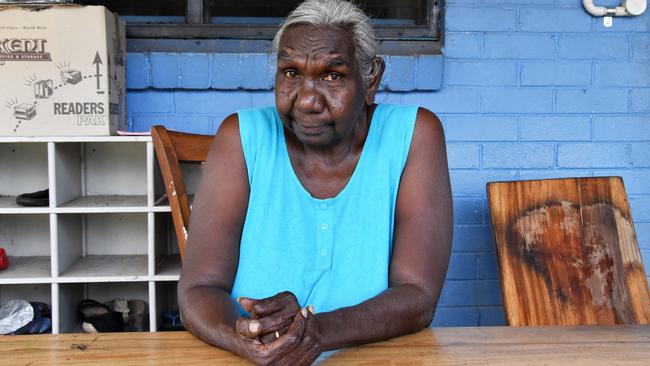
Add your comment to this story
To join the conversation, please log in. Don't have an account? Register
Join the conversation, you are commenting as Logout
‘It’s a coup’: ‘Terminated’ Alice Springs principal’s explosive allegations
The former principal of troubled Alice Springs school is alleging he was sacked after standing his ground over a proposal which is going to be ‘a sh-t show’.
Gaps in Darwin maternity services highlighted through stories of loss
Darwin families are making plans to leave the NT as shocking testimonies reveal gaps in maternity care, with some mothers seeking help four times before tragedy struck.